
Deutsch-Chinesische Enzyklopädie, 德汉百科
 China
China
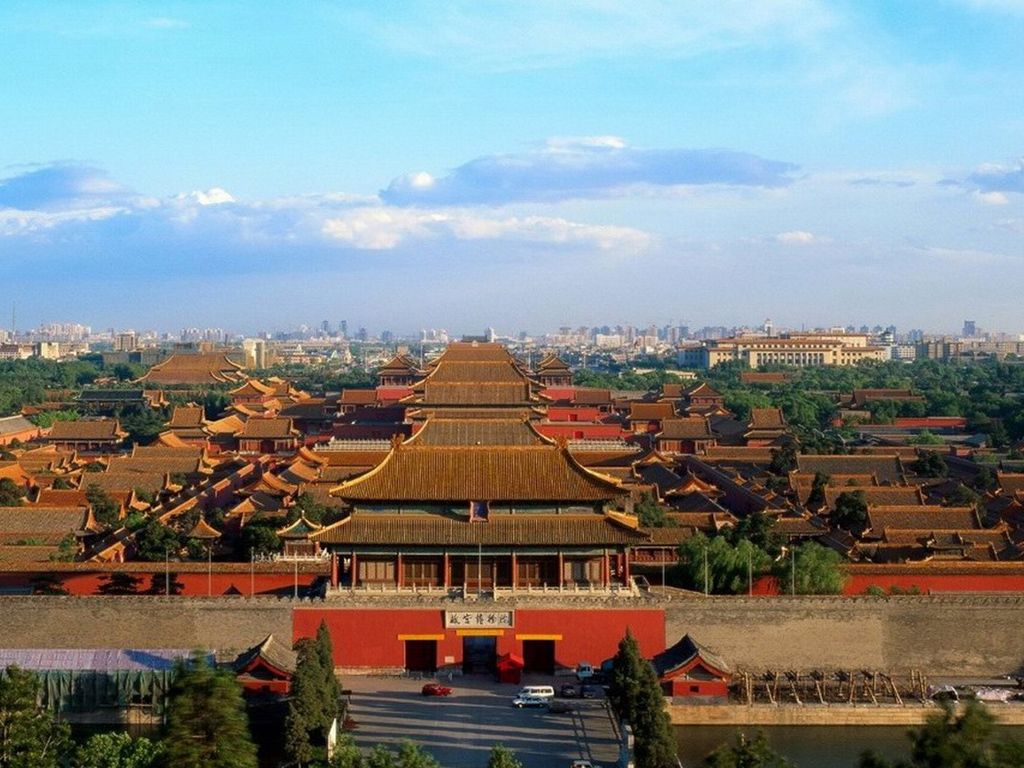
(Quelle:http://www.ccots.com.cn)
Die Verbotene Stadt war ein faszinierendes Erlebnis, zum einen wegen ihrer großartigen Architektur und zum anderen wegen ihrer unglaublichen Dimension. Direkt im Herzen von Peking nimmt die alte Kaiserstadt eine Fläche von 72 ha ein, auf der sich 890 Tore und Paläste sowie zahllose Pavillons mit insgesamt 9999,5 Räumen befinden - der Legende nach ein Raum weniger als der Palast im Himmel. Die gesamte Anlage ist von einem 52 Meter breiten und 6 Meter tiefen Graben sowie einer zehn Meter hohen und 3.400 Meter langen Stadtmauer mit Wachtürmen umgeben.
Der Bau des Palast-Komplexes dauerte von 1406 bis 1420. Bis zur Revolution im Jahre 1911 lebten und regierten hier 24 Kaiser der Ming und Qing Dynastien. Auf diese Weise beherbergt die Verbotene Stadt zahlreiche Kunstschätze sowie eine Vielzahl gut erhaltener architektonischer Meisterwerke dieser Zeit. Der Kaiserpalast ist bei der UNESCO als das größte und bedeutendste architektonische Palast-Ensemble in China gelistet und ist eine der bekanntesten Touristenattraktion weltweit, was leider dazu führt, dass sich Tausende von Menschen um die Paläste drängen und es wirklich einiger Anstrengung bedarf, über die Absperrung hinweg einen Blick in das Innere zu werfen.(Quelle: www.sights-and-culture.com/china/verbotene-stadt.html)
 *China's political system
*China's political system
 *Political system of the People's Republic of China
*Political system of the People's Republic of China
 *China's political system
*China's political system
 Regierung der Sonderverwaltungsregion
Regierung der Sonderverwaltungsregion
 China
China
 Gesetze der VR China
Gesetze der VR China
 Hongkong Tebiexingzhengqu-HK
Hongkong Tebiexingzhengqu-HK
 Macau Tebiexingzhengqu-MO
Macau Tebiexingzhengqu-MO

 Anhui Sheng-AH
Anhui Sheng-AH
 Beijing Shi-BJ
Beijing Shi-BJ
 China
China
 Fujian Sheng-FJ
Fujian Sheng-FJ
 Gansu Sheng-GS
Gansu Sheng-GS
 Guangdong Sheng-GD
Guangdong Sheng-GD
 Guizhou Sheng-GZ
Guizhou Sheng-GZ
 Hebei Sheng-HE
Hebei Sheng-HE
 Heilongjiang Sheng-HL
Heilongjiang Sheng-HL
 Henan Sheng-HA
Henan Sheng-HA
 Hongkong Tebiexingzhengqu-HK
Hongkong Tebiexingzhengqu-HK
 Hubei Sheng-HB
Hubei Sheng-HB
 Hunan Sheng-HN
Hunan Sheng-HN
 Jiangsu Sheng-JS
Jiangsu Sheng-JS
 Jiangxi Sheng-JX
Jiangxi Sheng-JX
 Liaoning Sheng-LN
Liaoning Sheng-LN
 Shaanxi Sheng-SN
Shaanxi Sheng-SN
 Shandong Sheng-SD
Shandong Sheng-SD
 Shanghai Shi-SH
Shanghai Shi-SH
 Shanxi Sheng-SX
Shanxi Sheng-SX
 Sichuan Sheng-SC
Sichuan Sheng-SC
 Tianjin Shi-TJ
Tianjin Shi-TJ

 Transport and traffic
Transport and traffic
 High speed traffic
High speed traffic
 Yunnan Sheng-YN
Yunnan Sheng-YN
 Zhejiang Sheng-ZJ
Zhejiang Sheng-ZJ
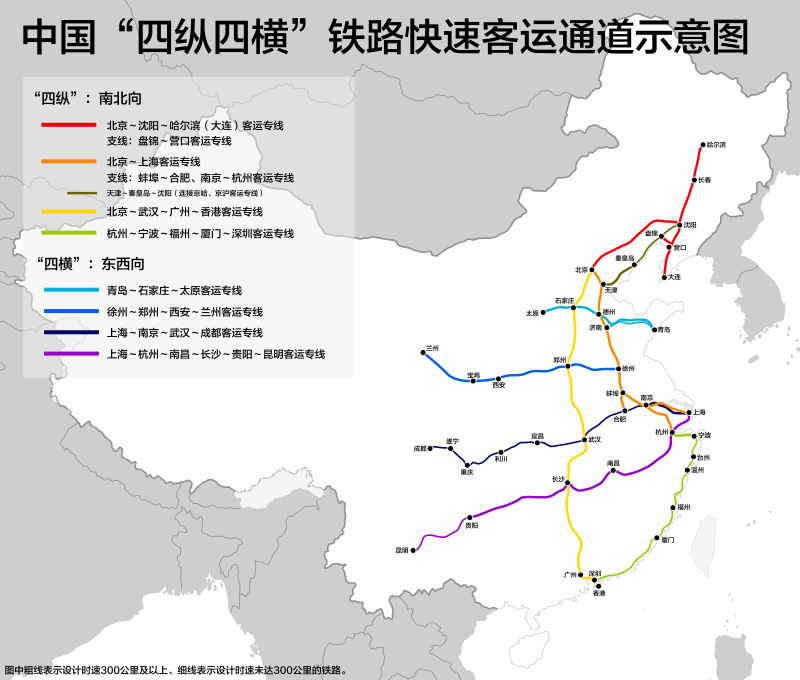
 Atomic bomb
Atomic bomb
 BRICS summit
BRICS summit
 China
China

 History
History
 M 1500 - 2000 AD
M 1500 - 2000 AD

 History
History

 History
History

 History
History
 N 2000 - 2100 AD
N 2000 - 2100 AD

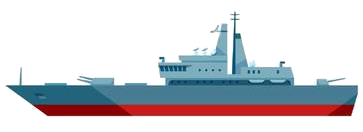


 Military, defense and equipment
Military, defense and equipment
 Nuclear Weapon
Nuclear Weapon

 Party and government
Party and government
 Group of the twenty most important industrial and emerging countries
Group of the twenty most important industrial and emerging countries

 Party and government
Party and government
 BRICS
BRICS
 Silk road
Silk road
 Shanghai Cooperation Organization
Shanghai Cooperation Organization

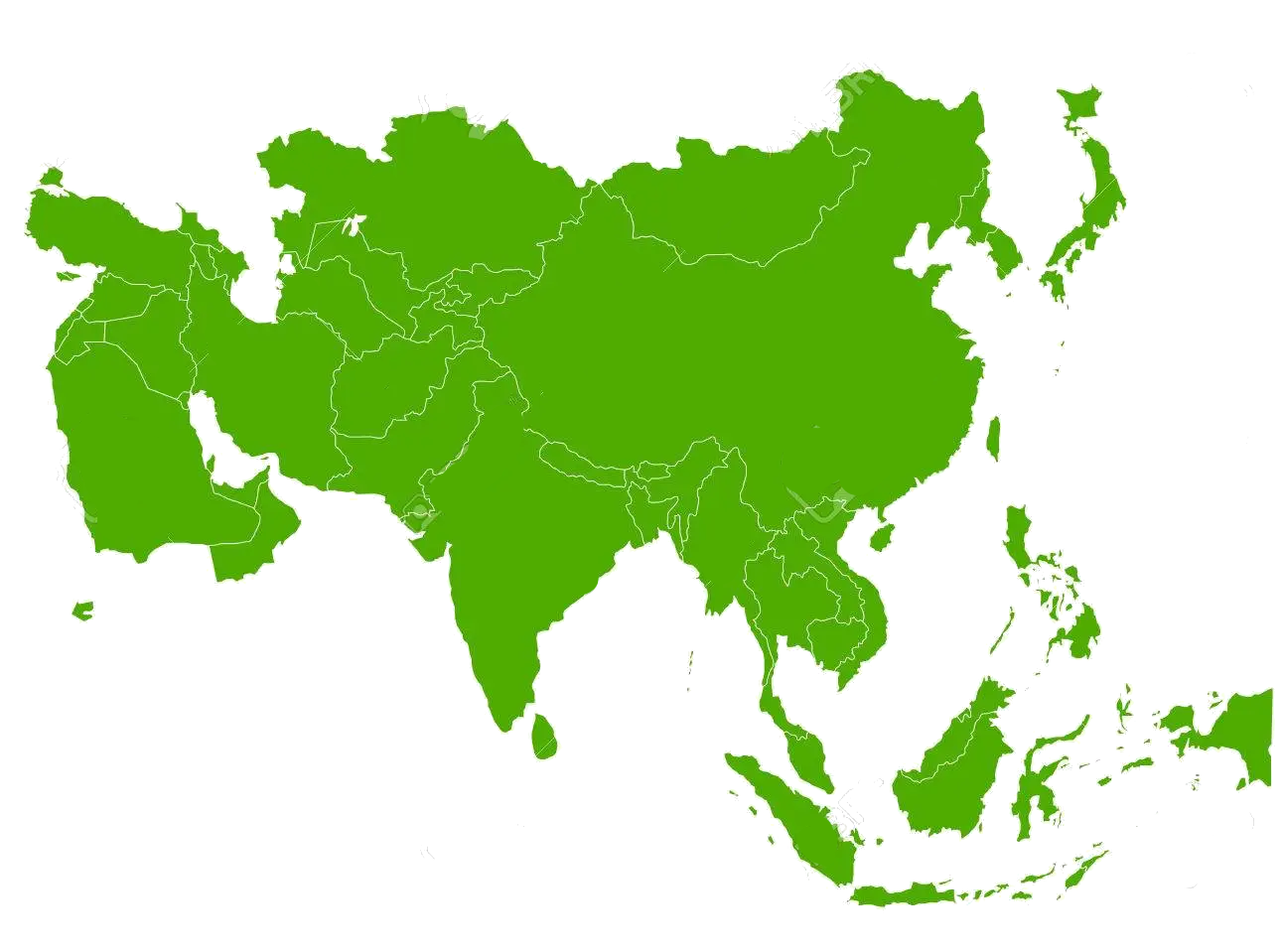 States of Asia
States of Asia

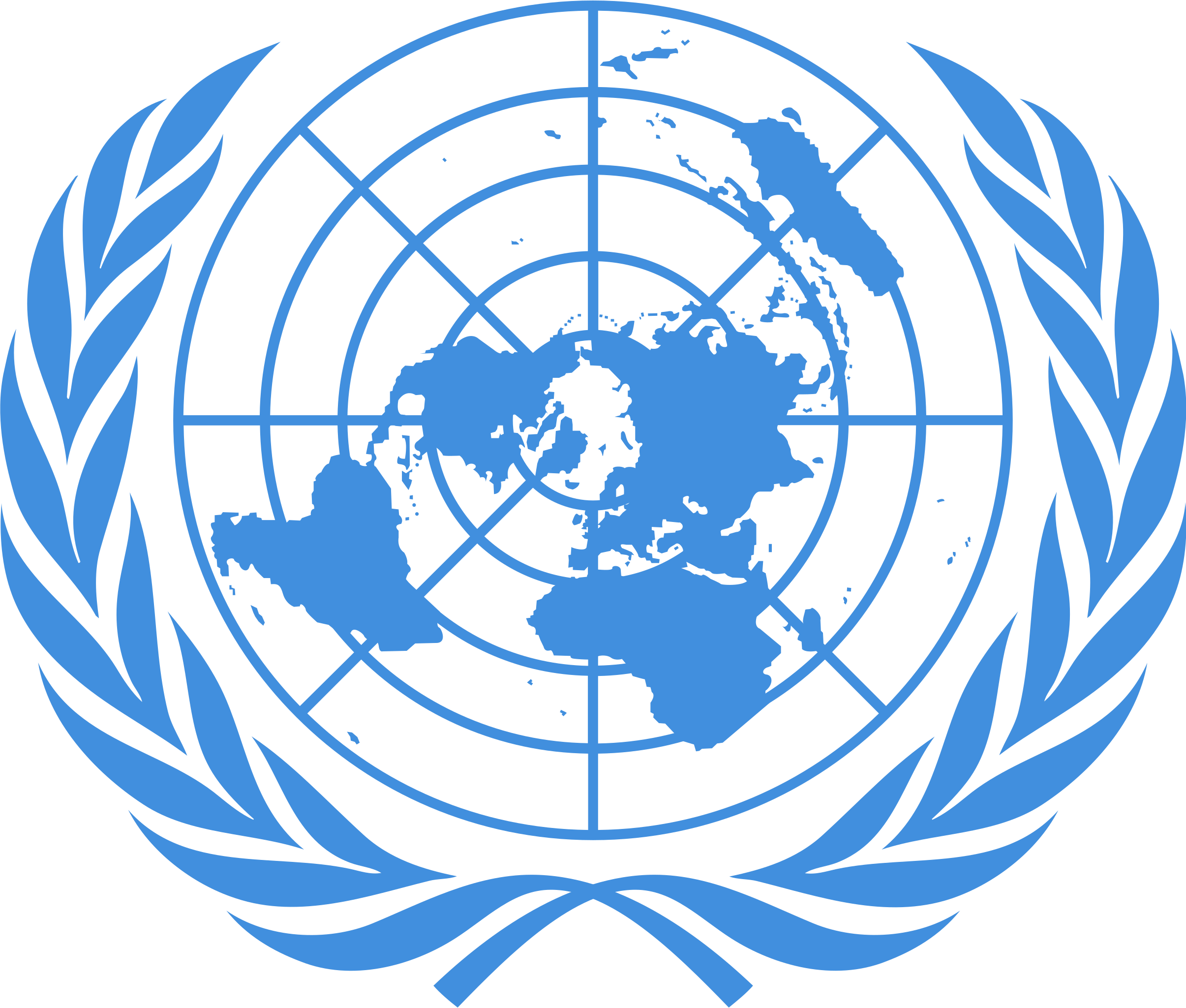 United Nations
United Nations
 United Nations Security Council
United Nations Security Council
 Hydrogen bomb
Hydrogen bomb

中华人民共和国,通称中国[13],是位于东亚的社会主义国家,首都位于北京[14]。中国领土陆地面积约960万平方千米,是世界上纯陆地[注 13]面积第二大、陆地[注 14]面积第三大、总面积第三大或第四大的国家[注 15][15],其分为23个省份[注 16]、5个自治区、4个直辖市和2个特别行政区。被视为亚洲地区重要地域大国,也被视为潜在超级大国[16][17][18]。是世界上人口最多的国家,约有13.9亿人[8],同时也是一个多民族国家,共有已确认的民族56个,其中汉族人口占91.51%[19]。以普通话和规范汉字为国家通用语言文字,少数民族地区可使用自己民族的语言文字。
中国地势西高东低而呈现三级阶梯分布,大部分地区属于温带、副热带季风气候,地理景致与气候型态丰富多样,有冰川、丹霞、黄土、沙漠、喀斯特等多种地貌[20],北方有干草原和荒漠,南方有热带雨林,西部和西南边境则有天山山脉、帕米尔高原、喀喇昆仑山脉和喜马拉雅山脉。东临太平洋,领海由渤海(内海)以及黄海、东海、南海三大边海组成[21],水域面积约470万平方千米,分布有大小岛屿7600个[22]。
科技方面,中国在航天航空、高速铁路、新能源、核技术、超级计算机、量子网络等领域有较强实力,研发经费则位居世界第二[23]。国防预算为世界第二高,拥有世界规模最大的常备部队及三位一体的核打击能力[24][25]。自1986年实行九年义务教育制度,就读公立学校的学生由政府提供其间学费。1978年改革开放后,中国成为经济增长最快的经济体之一[26][27]。当前,中国对外贸易额世界第一,是世界上最大的商品出口国及第二大的进口国,依国内生产总值按购买力平价位列世界第一、而国际汇率则排名世界第二[28]。2017年,中国人均国内生产总值依购买力平价为18,119美元,列全球第76位;依国际汇率则为8,643美元,列全球第72位,均尚低于世界水平[10]。改革开放以来,尽管贫困问题得到极大改善,但收入差距较大,且区域间发展不均——东部沿海地区的经济较中西部及东北地区发达——的问题仍极需解决[29][30]。
1949年中国共产党在内战中取得优势,终结了中国国民党在中国大陆的统治,于同年10月1日建立了中华人民共和国中央人民政府,并与退守台湾地区的中华民国政府形成两岸分治的政治格局。遵循和平共处五项原则的外交政策,在1971年取得在联合国的中国代表权后,成为联合国安全理事会常任理事国并加入了许多国际组织。
Die Volksrepublik China (chinesisch 中华人民共和国, Pinyin Zhōnghuá Rénmín Gònghéguó ![]() [tʂʊŋ˥xua˧˥ʐɛn˧˥mɪn˧˥kʊŋ˥˩xə˧˥kuɔ˧˥]), allgemein als China bezeichnet, ist ein am 1. Oktober 1949 gegründeter sozialistischer Staat in Ostasien. Mit rund 1,4 Milliarden Einwohnern stellt China das bevölkerungsreichste und gemessen an seiner Gesamtfläche das viertgrößte Land der Erde dar.[7]
[tʂʊŋ˥xua˧˥ʐɛn˧˥mɪn˧˥kʊŋ˥˩xə˧˥kuɔ˧˥]), allgemein als China bezeichnet, ist ein am 1. Oktober 1949 gegründeter sozialistischer Staat in Ostasien. Mit rund 1,4 Milliarden Einwohnern stellt China das bevölkerungsreichste und gemessen an seiner Gesamtfläche das viertgrößte Land der Erde dar.[7]
Gemäß ihrer Verfassung steht die Volksrepublik China „unter der demokratischen Diktatur des Volkes“, wird jedoch seit 1949 autoritär von der Kommunistischen Partei Chinas (KPCh) regiert. Wirtschaftlich weist China seit vielen Jahren eine hohe Dynamik auf. Auf Grundlage ihrer Reform- und Öffnungspolitik entwickelte sich China beginnend ab 1978 zu einer wirtschaftlichen und technologischen Großmacht.[8] Von der Weltbank wird das Land seit 2016 zu den Staaten mit einem Einkommensniveau im oberen Mittelfeld gerechnet. Seit 2010 ist China der Staat mit der umfangreichsten Warenausfuhr und gemessen an der Kaufkraftparität seit 2016 die größte Volkswirtschaft der Welt. Das jährliche Wirtschaftswachstum lag zwischen 2010 und 2017 im Durchschnitt bei 6,7 Prozent.[9]
Die Volksrepublik China zählt zu den offiziellen Atommächten, ist ständiges Mitglied des Weltsicherheitsrates sowie unter anderem Mitglied der Welthandelsorganisation, Weltbank, APEC, ASEAN, BRICS, UNESCO, Interpol, G20.
中華人民共和国(ちゅうかじんみんきょうわこく、簡体字: 中华人民共和国、繁体字: 中華人民共和國、拼音: 、英語: People's Republic of China, PRC)、通称中国(ちゅうごく、拼音: 、英語: China)は、東アジアに位置する主権国家。首都・北京市を政庁所在地とし、13億8千万人以上の人口で世界一人口が多い国でもある。
中華人民共和国憲法第一条で社会主義国家であることを明言しており、政治は中国共産党が指導的地位を有するヘゲモニー政党制を採用している[4]。
中華人民共和国は、中華民国統治下の中国で1921年に結党された中国共産党が、ソビエト連邦の支援を受けながら国共合作・抗日戦争(八路軍・新四軍)・国共内戦を経て国民政府を台湾島へ放逐[5]し、1949年10月1日に北京市で建国式典(中華人民共和国開国大典)を開催したことで成立した。
同国は国共内戦の延長で1954年に「台湾解放宣言」[6]を出し、第一次台湾海峡危機(1954年~1955年)と金門砲戦(1958年~1979年)を起こしたが武力による台湾占領には至らなかった。同国は2010年代に入ると一つの中国による台湾問題の解決を「(自国の)核心的利益の一つ」と規定するようになり、基本的には九二共識の合意に基づいた平和的な中国統一を目指しているが、一方で人民解放軍の武力による台湾制圧の可能性も指摘されている[7]。
計測方法によるが、同国は陸地面積では世界第2位[8]、総面積では世界第3位又は第4位である。同国の地形は、乾燥した北の森林ステップ、ゴビ砂漠、タクラマカン砂漠から、多湿な南の亜熱帯の森林まで広大かつ多様である。ヒマラヤ山脈、カラコルム山脈、パミール高原、天山山脈により、同国は南及び中央アジアから切り離されている。長さ世界第3位の長江及び同世界第6位の黄河は、チベット高原から人口密度の高い東の沿岸地域に流れ、古代には黄河文明や長江文明を興してきた。同国の太平洋に沿った海岸線は14,500kmの長さで、渤海、黄海、東シナ海、南シナ海に囲まれている。同国の国土は、22省級行政区、5自治区、北京市・天津市・上海市・重慶市の4直轄市、大部分が自治的な香港・マカオの2特別行政区によって構成されている。
中国は、繁栄と衰退の繰り返しだと考えられる過去2000年間の大部分で世界最大かつ最も複雑な経済を有した[9][10]。1978年における改革開放の導入以来、外資流入の勢いが増してゆき、産業構造が政策から転換して、中国は世界で最も成長率が高い主要経済大国の1つになった(#経済)。ソ連の純粋な社会主義体制と距離をとり、「経済面は有限な資本主義、政治面は一党独裁を守る」のような国家形態に変更したのである(中国特色社会主義)。
2016年時点で、同国は名目GDP及び貿易輸入額のいずれにおいても世界第2位であり(2014年には国際通貨基金・世界銀行・CIAワールドファクトブックによると購買力平価は世界最大のGDPとなった[11][12][13])、購買力平価GDPと貿易輸出額は世界一位である[14]。同国は核保有国に認められ、世界第2位の防衛予算で世界最大の常備軍を有する。中華人民共和国は1971年以来国際連合加盟国であり、中華民国の後任として安全保障理事会常任理事国である。中国は多数の公式及び非公式の多国間機構加盟国であり、WTO、APEC、BRICs、上海協力機構、BCIM、G20がこれに該当する。中国はアジアの地域大国であり、多数の解説者により潜在的な超大国として特徴付けられてきた[15][16]。なお2017年7月現在、中華人民共和国の世界遺産はイタリアについで52件ある。国内には文化遺産が22件、自然遺産が4件、複合遺産が4件存在する。
China, officially the People's Republic of China (PRC), is a country in East Asia and the world's most populous country, with a population of around 1.404 billion.[13] Covering approximately 9,600,000 square kilometers (3,700,000 sq mi), it is the third- or fourth-largest country by total area.[k][19] Governed by the Communist Party of China, the state exercises jurisdiction over 22 provinces, five autonomous regions, four direct-controlled municipalities (Beijing, Tianjin, Shanghai, and Chongqing), and the special administrative regions of Hong Kong and Macau.
China emerged as one of the world's earliest civilizations, in the fertile basin of the Yellow River in the North China Plain. For millennia, China's political system was based on hereditary monarchies, or dynasties, beginning with the semi-legendary Xia dynasty in 21st century BCE.[20] Since then, China has expanded, fractured, and re-unified numerous times. In the 3rd century BCE, the Qin reunited core China and established the first Chinese empire. The succeeding Han dynasty, which ruled from 206 BC until 220 AD, saw some of the most advanced technology at that time, including papermaking and the compass,[21] along with agricultural and medical improvements. The invention of gunpowder and movable type in the Tang dynasty (618–907) and Northern Song (960–1127) completed the Four Great Inventions. Tang culture spread widely in Asia, as the new Silk Route brought traders to as far as Mesopotamia and Horn of Africa.[22] Dynastic rule ended in 1912 with the Xinhai Revolution, when a republic replaced the Qing dynasty. The Chinese Civil War resulted in a division of territory in 1949, when the Communist Party of China established the People's Republic of China, a unitary one-party sovereign state on Mainland China, while the Kuomintang-led government retreated to the island of Taiwan. The political status of Taiwan remains disputed.
Since the introduction of economic reforms in 1978, China's economy has been one of the world's fastest-growing with annual growth rates consistently above 6 percent.[23] As of 2016, it is the world's second-largest economy by nominal GDP and largest by purchasing power parity (PPP).[24] China is also the world's largest exporter and second-largest importer of goods.[25] China is a recognized nuclear weapons state and has the world's largest standing army and second-largest defense budget.[26][27] The PRC is a permanent member of the United Nations Security Council as it replaced the ROC in 1971, as well as an active global partner of ASEAN Plus mechanism. China is also a leading member of numerous formal and informal multilateral organizations, including the Shanghai Cooperation Organization (SCO), WTO, APEC, BRICS, the BCIM, and the G20. In recent times, China has been widely characterized as a global superpower.[28][29][30]
La Chined, en forme longue la république populaire de Chine (ou République populaire de Chinee, RPC, chinois simplifié : 中华人民共和国 ; chinois traditionnel : 中華人民共和國 ; pinyin : , prononcé [tʂʊŋ˥xua˧˥ɻən˧˥mɪn˧˥kʊŋ˥˩xə˧˥kuɔ˧˥] Écouter), parfois appelée Chine populaire, est un pays d'Asie de l'Est. Avec près d'1,4 milliard d'habitants, soit environ un sixième de la population mondiale, elle est le pays le plus peuplé du monde6. Elle compte huit agglomérations de plus de dix millions d'habitants, dont la capitale Pékin, Shanghai, Canton, Shenzhen et Chongqing, ainsi que plus de trente villes d'au moins deux millions d'habitants. Avec 9 596 961 km2 selon les chiffres de l'ONU7, la Chine est également le plus grand pays d'Asie orientale et le troisième ou quatrième plus grand pays du monde par superficie8. La Chine s'étend des côtes de l'océan Pacifique au Pamir et aux Tian Shan, et du désert de Gobi à l'Himalaya et aux confins de la péninsule indochinoise.
En 2014, la république populaire de Chine est la première puissance économique mondiale (en termes de PIB mesuré en parité de pouvoir d'achat)9. La Chine est également l'un des cinq membres permanents du Conseil de sécurité des Nations unies. Elle est également le premier exportateur mondial et dispose de l'arme nucléaire, de la plus grande armée du monde et du deuxième plus grand budget militaire. Gouvernée par le Parti communiste chinois, la Chine a adopté une « économie socialiste de marché » où capitalisme et contrôle politique autoritaire se côtoient en une formule spécifique. La Constitution de la république populaire de Chine la définit comme « un État socialiste de dictature démocratique populaire, dirigé par la classe ouvrière et basé sur l'alliance des ouvriers et des paysans ». Le préambule de la Constitution spécifie le rôle dirigeant du Parti communiste chinois et continue de citer officiellement le marxisme-léninisme comme idéologie de référence de l'État10.
La Chine est l'une des plus anciennes civilisations au monde, et est parfois citée comme la plus ancienne civilisation continue11. Elle trouve son origine dans la vallée du fleuve Jaune puis s'est étendue vers le sud (conquête des territoires au sud du Yangzi Jiang dès la dynastie Han), vers l'ouest (premières incursions en Asie centrale sous les Han, extension temporaire jusqu'à la mer Caspienne sous les Tang, conquête du Xinjiang et du Tibet sous les Qing12) et vers le nord (la dynastie Qing, d'origine mandchoue apporta à la Chine la Mandchourie et la Mongolie). Au cours de son histoire la Chine a été à plusieurs reprises divisée puis réunifiée ; elle a été par deux fois entièrement conquise par des étrangersf (par les Mongols au XIIIe siècle et par les Mandchous au XVIIe siècle), bien que ceux-ci aient fini par adopter les coutumes et le système administratif chinois pour gouverner l'empire. La dernière dynastie impériale, les Qing (la dynastie d'origine mandchoue qui régnait sur le pays depuis 1644), a connu une période de déclin durant la phase d'expansion coloniale des pays occidentaux, menant le pays de défaite en défaite à partir des guerres de l'opium. C'est seulement après la victoire contre l'armée japonaise en 1945 que la Chine a pu se libérer des interventions étrangères. La république populaire de Chine est proclamée le 1er octobre 1949, à la suite de la victoire militaire du Parti communiste chinois sur le Kuomintang. Elle se présente aujourd'hui comme une « république socialiste » et exerce un contrôle sur vingt-deux provincesg, cinq régions autonomes, quatre municipalités (dont Pékin) et deux régions administratives spéciales (Hong Kong et Macao).
La Chine a connu une période néolithique et des âges des métaux plutôt tardive par rapport à l'Anatolie et à la Mésopotamie, mais elle a été et reste le foyer de nombreuses innovations dans les domaines des sciences et des arts6. Elle est à l'origine de nombreuses inventions majeures telles la boussole13, le papier14, le billet de banque15 ou la poudre noire16. La civilisation chinoise a fortement imprégné toute l'Asie de l'Est, notamment aux niveaux religieux (confucianisme, taoïsme et développement du bouddhisme chan), linguistique (les caractères chinois ont été utilisés dans toute la région et de nombreux mots chinois sont présents dans les langues qui y sont parlées), ainsi qu'artistique (calligraphie, peinture, imprimerie, instruments de musique).
La Cina (中國T, 中国S, ZhōngguóP), ufficialmente la Repubblica Popolare Cinese (中華人民共和國T, 中华人民共和国S, Zhōnghuá Rénmín GònghéguóP ), è uno Stato sovrano situato nell'Asia orientale ed è il paese più popoloso del mondo, con una popolazione di oltre 1,385 miliardi di persone.
La Cina è una Repubblica popolare in cui il potere è esercitato dal solo Partito Comunista Cinese (中国共产党 oppure 中共). Il governo ha sede nella capitale Pechino (北京首都) ed esercita la propria giurisdizione su ventidue province (省), cinque regioni autonome (自治区), quattro municipalità direttamente controllate 直辖市 (Pechino 北京, Tientsin 天津, Shanghai 上海 e Chongqing 重庆) e due regioni amministrative speciali 特别行政区 (Hong Kong 香港 e Macao 澳门) parzialmente autonome. La Cina rivendica la propria sovranità anche sull'isola di Formosa, che considera ufficialmente una sua provincia, sulla quale non esercita tuttavia alcun controllo diretto. L'isola è dal 1949 sotto il controllo del governo della Repubblica di Cina (Taiwan 中華民國). La complessa condizione politica di Taiwan è una delle conseguenze della guerra civile cinese che ha preceduto la fondazione della Repubblica Popolare Cinese.
Con la sua superficie di circa 9 572 900 chilometri quadrati la Cina è il terzo stato più grande del mondo per superficie. Il paesaggio della Cina è vasto e diversificato: va dalle steppe della foresta e i deserti dei Gobi e del Taklamakan nell'arido nord alle foreste subtropicali e umide del sud. L'Himalaya, il Karakoram, il Pamir e il Tian Shan sono le catene montuose che separano la Cina meridionale dall'Asia centrale. Il Fiume Azzurro (长江) e il Fiume Giallo (黄河), rispettivamente il terzo e il sesto più lunghi del mondo, scorrono dall'altopiano del Tibet verso la costa orientale densamente popolata. La costa della Cina lungo l'oceano Pacifico è lunga circa 14.500 chilometri ed è delimitata dal mare di Bohai, dal mar Giallo, dal mar Cinese Orientale e dal mar Cinese Meridionale.
L'antica civiltà cinese – una delle prime al mondo – si sviluppò inizialmente nelle pianure comprese tra il Fiume Giallo e il Fiume Azzurro. A partire dall'età del bronzo (verso la fine del II millennio a.C.) si ha evidenza di strutture feudali, in cui i nobili si raccoglievano intorno a monarchie ereditarie. Vi sono testimonianze di una casata regnante nella prima metà del I millennio a.C., nota come dinastia Zhou (周朝), il cui declino condusse alla nascita di un discreto numero di regni indipendenti in competizione per il predominio sulla regione (periodo delle Primavere e Autunni, 春秋), con stagioni di conflitto che si fecero particolarmente accese nel periodo che va dall'VIII al III secolo a.C. Nel 221 a.C. lo Stato di Qin sconfisse e conquistò i territori di tutti gli altri Stati combattenti dando vita al primo impero della storia cinese sotto la dinastia Qin (秦朝).
Da quel momento il titolo di imperatore della Cina divenne il sinonimo della raggiunta supremazia. La dinastia Qin non durò a lungo, ma i popoli precedentemente conquistati vennero poco dopo riuniti sotto l'egida della dinastia Han (汉朝, III secolo a.C.-III secolo d.C.). I quattro secoli in cui regnarono i sovrani della dinastia Han sono considerati cruciali per la definizione e affermazione della identità culturale cinese, tanto da divenire il termine con cui i cinesi definirono se stessi (con il termine appunto di etnia o popolo han, 汉族). Da allora la storia cinese ha visto l'alternarsi di periodi di divisione e fasi di unificazione, con conseguenti periodi di frammentazione, contrazione o espansione territoriale, sotto l'egida di diverse dinastie, talora di etnia straniera (come nel caso dei mongoli o dei mancesi).
L'ultima dinastia fu quella dei Qing, il cui regno si concluse nel 1911 con la fondazione della Repubblica di Cina (中华民国). Dopo la sconfitta dell'Impero giapponese (大日本皇国) durante la seconda guerra mondiale il Paese fu scosso dalla guerra civile che vedeva contrapposte le forze nazionaliste del Kuomintang (国民党), il partito che allora deteneva il governo del paese, e le forze facenti capo al Partito Comunista Cinese. Nel 1949 la guerra si concluse con la sconfitta del Kuomintang e la fuga del governo nazionalista sull'isola di Formosa, nella cui capitale Taipei (台北) ha tuttora sede l'attuale Repubblica di Cina, altresì nota come Taiwan. In seguito alla vittoria conseguita sul continente il 1º ottobre del 1949 a Pechino le forze comuniste guidate da Mao Zedong proclamarono ufficialmente la nascita della Repubblica Popolare Cinese.
Dopo l'introduzione di riforme economiche nel 1978 la Cina è diventata l'economia dalla crescita più rapida al mondo. A partire dal 2013 è la seconda economia più grande al mondo sia come PIL totale nominale, sia per parità di potere d'acquisto; è anche il più grande esportatore e importatore di merci al mondo. La Cina è ufficialmente uno Stato munito di armi nucleari e ha il più grande esercito permanente del mondo, con il secondo più grande bilancio della difesa. La Cina è membro delle Nazioni Unite dal 1971, quando ha preso il posto della Repubblica di Cina tra i seggi dei membri permanenti del Consiglio di sicurezza delle Nazioni Unite. La Cina è anche membro di numerose organizzazioni multilaterali,[6] tra cui l'OMC, l'APEC, il BRICS, l'Organizzazione di Shanghai per la cooperazione, il BCIM[7] e il G-20. La Cina, unanimemente riconosciuta come grande potenza dal consesso internazionale, è una potenziale superpotenza secondo un certo numero di accademici e analisti che si occupano di questioni militari, politiche ed economiche.
La República Popular China (en chino simplificado: 中华人民共和国 y en pinyin: Zhōnghuá Rénmín Gònghéguó), o simplemente China (en chino simplificado: 中国 y en pinyin: Zhōngguó), es un Estado soberano situado en Asia Oriental. Es el país más poblado del mundo, con 1395 millones de habitantes, y la primera potencia económica mundial por PIB, en términos de paridad de poder adquisitivo.81617 La República Popular China es un Estado unipartidista gobernado por el Partido Comunista y tiene la sede de su gobierno en la capital, Pekín.18 Está dividida en veintidós provincias, cinco regiones autónomas, cuatro municipios bajo jurisdicción central —Pekín, Tianjin, Shanghái y Chongqing— y dos regiones administrativas especiales —Hong Kong y Macao—.19 Asimismo, China reclama la que considera provincia de Taiwán, que es controlada por la República de China con un estatus político de la isla controvertido.20
Con una superficie de 9 596 960 km²,5 China ―que tiene fronteras con catorce Estados soberanos―nota 1 es el tercer país más extenso del planeta por superficie terrestre detrás de Rusia y Canadá y el cuarto si se cuentan las masas de agua, detrás de Rusia, Canadá y Estados Unidos. El paisaje chino es vasto y diverso, desde las estepas y los desiertos del Gobi y Taklamakán en el árido norte hasta los bosques subtropicales en el húmedo sur. Las cordilleras montañosas del Himalaya, el Karakórum, Pamir y Tian Shan la separan del sur y el centro de Asia. Los ríos Yangtsé y Amarillo, tercero y sexto más largos del mundo, discurren desde la meseta tibetana hasta desembocar en las densamente pobladas costas orientales. China tiene 14 500 km de costa a lo largo del océano Pacífico,5 en donde está bañada por los mares Amarillo, de Bohai, de China Oriental y de la China Meridional.
La civilización china, una de las más antiguas del mundo, floreció en la fértil cuenca del río Amarillo. Durante milenios su sistema político se basó en monarquías hereditarias, conocidas como dinastías. La primera de las cuales fue la semimitológica dinastía Xia en torno al 2000 a. C. Desde el 221 a. C., cuando la dinastía Qin conquistó diversos Estados y formó el primer Imperio chino, el país se ha expandido, fracturado y ha sido reformado en numerosas ocasiones. La República de China derrocó a la última dinastía en 1911 y gobernó la China continental hasta 1949. Después de la derrota del Imperio del Japón en la Segunda Guerra Mundial y la retirada de sus tropas de China, el partido comunista se impuso en la Guerra Civil y proclamó la República Popular China en Pekín el 1 de octubre de 1949. El derrotado régimen de la República de China, dominado por el partido Kuomintang trasladó su gobierno a Taipéi y desde entonces, la jurisdicción de la República de China se limita a Taiwán y algunas islas periféricas.
Desde la introducción de las reformas económicas de 1978, China ha sido la economía de más rápido crecimiento del mundo, alcanzando en 2014 la primacía mundial en términos de PIB medido en paridad de poder adquisitivo y manteniéndose como la segunda potencia por PIB nominal. China es, además, el mayor exportador e importador de bienes y la primera potencia industrial.21 China dispone del segundo ejército más numeroso del mundo, posee armas nucleares y cuenta con el segundo presupuesto militar después de Estados Unidos.22 La República Popular China es miembro de la ONU desde 1971, año en que reemplazó a la República de China como miembro permanente del Consejo de Seguridad de las Naciones Unidas, y es reconocida diplomáticamente por casi todos los países del mundo. También es miembro formal o informal de numerosas organizaciones multilaterales, como la OMC, la APEC, los BRICS, la Organización de Cooperación de Shanghái y el G20. China es considerada por numerosos analistas como una superpotencia emergente.23242526
Кита́й (Кита́йская Наро́дная Респу́блика, КНР; кит. трад. 中華人民共和國, упр. 中华人民共和国, пиньинь: Zhōnghuá Rénmín Gònghéguó, палл.: Чжунхуа Жэньминь Гунхэго) — государство в Восточной Азии.
Крупнейшее по численности населения государство мира (свыше 1,38 млрд[15], большинство населения — этнические китайцы, самоназвание — хань); занимает третье место в мире по территории, уступая России и Канаде.
Китайская Народная Республика, согласно конституции, — социалистическое государство[16]. Является великой державой — потенциальной сверхдержавой, экономической сверхдержавой, постоянным членом Совета безопасности ООН.
Одна из ведущих космических держав мира, обладает ядерным оружием и крупнейшей в мире армией по численности военнослужащих.
В 2010 году китайская экономика обогнала японскую и стала второй экономикой мира по номинальному ВВП[17]. С декабря 2014 года является первой экономикой мира по ВВП (ППС)[18]. КНР является мировым лидером по производству большинства видов промышленной продукции, в том числе по производству автомобилей и потребительскому спросу на них. Крупнейший мировой экспортёр («фабрика мира»). Располагает наибольшими в мире золотовалютными резервами.
Китай состоит в таких международных организациях, как ООН, АТЭС, G20, Всемирная торговая организация (ВТО; с декабря 2001 года[19]), а также ШОС и БРИКС.
Со времени провозглашения Китайской Народной Республики в 1949 году правящей партией является Коммунистическая партия Китая (КПК). Председателем КНР является Си Цзиньпин (с 2013 года).
• innerhalb Chinas verfügen die südwestlichen Provinzen über das größte Wasserkraftpotential
• die Wasserenergie der Provinzen Sichuan, Yunnan und Guizhou beträgt 50.7% der gesamten Wasserenergie Chinas
• die verwertbare Wasserenergie der größten Flüsse, wie Changjiang, Huanghe und Amur macht 60% des gesamten verwertbaren Wasserkraftpotentials des Landes aus
– Reserven an Wasserenergie: 0.69 Milliarden KW (basierend auf Strömungsstärke und Wassertiefe)
– Stromerzeugung pro Jahr realistisch: 6000 Milliarden KWh
• praktisch
– verwertbare Kapazität: 0.54 Milliarden KW

 Belgium
Belgium
 Brazil
Brazil
 China
China
 Germany
Germany

 Financial
Financial
 International Bank for Cooperation
International Bank for Cooperation
 France
France

 Hand in Hand
Hand in Hand
 India
India
 Iran
Iran
 Italy
Italy
 Japan
Japan
 Canada
Canada
 Netherlands
Netherlands
 Republic of Korea
Republic of Korea
 Russia
Russia
 Saudi Arabia
Saudi Arabia
 Switzerland
Switzerland
 Spain
Spain
 Turkey
Turkey
 United States
United States
 United Kingdom
United Kingdom

 Washington, D.C.
Washington, D.C.
 World Bank
World Bank
 Barber Benjamin Conable
Barber Benjamin Conable
 World Bank
World Bank
 Alden Winship Clausen
Alden Winship Clausen
 World Bank
World Bank
 Eugene Isaac Meyer
Eugene Isaac Meyer
 World Bank
World Bank
 Eugene Robert Black
Eugene Robert Black
 World Bank
World Bank
 George David Woods
George David Woods
 World Bank
World Bank
 James David Wolfensohn
James David Wolfensohn
 World Bank
World Bank
 Jim Yong Kim
Jim Yong Kim
 World Bank
World Bank
 John Jay McCloy
John Jay McCloy
 World Bank
World Bank
 Lewis Thompson Preston
Lewis Thompson Preston
 World Bank
World Bank
 Paul Wolfowitz
Paul Wolfowitz
 World Bank
World Bank
 Robert Strange McNamara
Robert Strange McNamara
 World Bank
World Bank
 Robert Zoellick
Robert Zoellick
 World Bank
World Bank
 Ajay Banga
Ajay Banga

 Important International Organizations
Important International Organizations

 Economy and trade
Economy and trade
 Economic and political research
Economic and political research

世界银行(英语:World Bank)是为发展中国家资本项目提供贷款的联合国系统国际金融机构[2]。它是世界银行集团的组成机构之一[3],同时也是联合国发展集团(UNDG)的成员。
世界银行的官方目标为消除贫困。根据其有关协定规定(修订并于1989年2月16日生效),其所有决定都必须旨在推动外商直接投资和国际贸易,以及为资本投资提供便利。[4]
世界银行由两个机构组成:国际复兴开发银行与国际开发协会。世界银行与世界银行集团并不一样,后者由国际复兴开发银行、国际开发协会(该两项通称“世界银行”)、国际金融公司、多边投资担保机构以及国际投资争端解决中心等5个机构组成[5]。然而在某些非正式场合,世界银行集团也可被简称为“世银”。目前该组织历代的行长都是美国人,另外重大决议时需要85%的票数才得以通过提案,而美国的投票占比从未低于15%,因而美国的投票比例被俗称为“否决权”。
Die Weltbank (engl. World Bank) bezeichnet im weiten Sinne die in der US-amerikanischen Hauptstadt Washington, D.C. angesiedelte Weltbankgruppe, eine multinationale Entwicklungsbank. Die Weltbankgruppe hatte ursprünglich den Zweck, den Wiederaufbau der vom Zweiten Weltkrieg verwüsteten Staaten zu finanzieren.
Die Weltbankgruppe umfasst die folgenden fünf Organisationen, die jeweils eine eigene Rechtspersönlichkeit besitzen:
- Internationale Bank für Wiederaufbau und Entwicklung (International Bank for Reconstruction and Development, IBRD; die Weltbank im engeren Sinn)
- Internationale Entwicklungsorganisation (International Development Association, IDA)
- Internationale Finanz-Corporation (International Finance Corporation, IFC)
- Multilaterale Investitions-Garantie-Agentur (Multilateral Investment Guarantee Agency, MIGA)
- Internationales Zentrum für die Beilegung von Investitionsstreitigkeiten (International Centre for Settlement of Investment Disputes, ICSID)
Die Organisationen der Weltbankgruppe sind durch verwaltungsmäßige Verflechtungen und durch einen gemeinsamen Präsidenten (im Fall der ICSID als Vorsitzender des Verwaltungsrates) verbunden.
世界銀行(せかいぎんこう、略称:世銀、英語: World Bank)は、各国の中央政府または同政府から債務保証を受けた機関に対し融資を行う国際機関である。本部はアメリカ合衆国ワシントンD.C.。加盟国は189ヶ国。
当初は国際復興開発銀行のみを指したが、1960年に設立された国際開発協会とあわせて世界銀行と呼んでいる。国際通貨基金と共に、第二次世界大戦後の金融秩序制度の中心を担っている。
The World Bank (French: Banque mondiale)[3] is an international financial institution that provides loans[4] to countries of the world for capital projects. It comprises two institutions: the International Bank for Reconstruction and Development (IBRD), and the International Development Association (IDA). The World Bank is a component of the World Bank Group.
The World Bank's most recent stated goal is the reduction of poverty.[5] As of November 2018, the largest recipients of world bank loans were India ($859 million in 2018) and China ($370 million in 2018), through loans from IBRD.[6][7]
La Banque mondiale (parfois abrégée BM) est une institution financière internationale qui accorde des prêts à effet de levier à des pays en développement pour des projets d'investissement.
Elle comprend deux institutions : la Banque internationale pour la reconstruction et le développement (BIRD) et l’Association internationale de développement (AID, IDA en anglais), créées pour lutter contre la pauvreté en apportant des aides, des financements et des conseils aux États en difficulté1.
La Banque mondiale est un sous-ensemble du Groupe de la Banque mondiale. Ce regroupement d'organisations financières internationales est également constitué de la Société Financière Internationale (IFC), de l'Agence Multilatérale de Garantie des Investissements (MIGA) et du Centre international pour le règlement des différends relatifs aux investissements (CIRDI).
Son siège est à Washington D.C. Le président est élu pour cinq ans par le Conseil des administrateurs de la Banque. Elle fait partie des institutions spécialisées du système de l'Organisation des Nations unies (ONU). Elle publie tous les ans une contribution sur un thème du développement dans son World Development Report.
En 2014, elle a accordé 65,6 milliards de dollars de prêts, dons, prises de participations et garanties, dont 20,9 milliards en Afrique et au Moyen-Orient.
La Banca Mondiale (in lingua inglese World Bank) comprende due istituzioni internazionali: la Banca internazionale per la ricostruzione e lo sviluppo (BIRS) e l'Agenzia internazionale per lo sviluppo (AIS o IDA), che si sono prefisse l'obiettivo di lottare contro la povertà e organizzare aiuti e finanziamenti agli stati in difficoltà.[1] La sua sede è a Washington D.C.; il presidente è eletto per cinque anni dal consiglio di amministrazione della banca. Fa parte delle istituzioni specializzate dell'Organizzazione delle Nazioni Unite.
El Banco Mundial (en inglés: World Bank, abreviado: WB) es una organización multinacional especializada en finanzas y asistencia. Se define como una fuente de asistencia financiera y técnica para los llamados países en desarrollo.1 Su propósito declarado es reducir la pobreza mediante préstamos de bajo interés, créditos sin intereses a nivel bancario y apoyos económicos a las naciones en desarrollo. Está integrado por 189 países miembros.2Fue creado en 1944 como parte del Acuerdo de Bretton Woods.3 Tiene su sede en la ciudad de Washington D.C., Estados Unidos.
En 1945, en el marco de las negociaciones previas al término de la Segunda Guerra Mundial, nace lo que a la fecha se conocería como el sistema financiero de Bretton Woods (llamado así por el nombre del complejo hotelero de la ciudad, New Hampshire, donde fue concebido) integrado por dos instituciones fundamentales para entender las políticas de desarrollo que tuvieron lugar a partir de la segunda mitad del siglo XX: el Banco Internacional de Reconstrucción y Fomento (BIRF) y el Fondo Monetario Internacional (FMI).
Concebido el primero, en un principio, con el fin de ayudar a las naciones europeas en la reconstrucción de las ciudades durante la posguerra, poco a poco fue ampliando sus funciones, creándose más organismos que funcionarían paralelamente a este, integrando lo que hoy conocemos como el Grupo del Banco Mundial (GBM).
Всемирный банк (также Мировой банк, англ. The World Bank) — международная финансовая организация, созданная с целью организации финансовой и технической помощи развивающимся странам[1].
В процессе своего развития Всемирный банк претерпевал различные структурные изменения, поэтому под термином Всемирный банк на разных этапах понимались разные организации.
Вначале Всемирный банк ассоциировался с Международным банком реконструкции и развития, осуществлявшим финансовую поддержку в восстановлении после Второй мировой войны Западной Европы и Японии. Позднее в 1960 г. была создана Международная ассоциация развития, которая взяла на себя часть функций, связанных с политикой этого банка.
 Ethiopia
Ethiopia
 Bangladesh
Bangladesh
 Belgium
Belgium
 Brazil
Brazil
 China
China
 Cuba
Cuba
 Denmark
Denmark
 Hunan Sheng-HN
Hunan Sheng-HN
 India
India

 Iowa-IA
Iowa-IA
 Israel
Israel
 Mexico
Mexico
 Switzerland
Switzerland
 Sierra Leone
Sierra Leone
 United States
United States
 United Kingdom
United Kingdom


 Afghanistan
Afghanistan
 Egypt
Egypt
 Albania
Albania
 Angola
Angola
 Antigua and Barbuda
Antigua and Barbuda
 Argentina
Argentina
 Armenia
Armenia
 Australia
Australia
 Bahrain
Bahrain
 Bangladesh
Bangladesh
 Barbados
Barbados
 Belgium
Belgium
 Belize
Belize
 Benin
Benin
 Bolivia
Bolivia
 Botsuana
Botsuana
 Brazil
Brazil
 Brunei Darussalam
Brunei Darussalam
 Bulgaria
Bulgaria
 Burkina Faso
Burkina Faso
 Burundi
Burundi
 Chile
Chile
 China
China
 Columbia
Columbia
 Costa Rica
Costa Rica
 Côte d´Ivoire
Côte d´Ivoire
 Cuba
Cuba
 Denmark
Denmark
 Demokratische Republik Kongo
Demokratische Republik Kongo
 Germany
Germany
 Dominica
Dominica
 Dominikanische Republik
Dominikanische Republik
 Djibouti
Djibouti
 Ecuador
Ecuador
 Estonia
Estonia

 European Union
European Union
 Fidschi
Fidschi

 Financial
Financial
 Finland
Finland
 France
France
 Gabun
Gabun
 Gambia
Gambia
 Georgia
Georgia
 Ghana
Ghana
 Grenada
Grenada
 Greece
Greece
 Guatemala
Guatemala
 Guinea
Guinea
 Guinea-Bissau
Guinea-Bissau
 Guyana
Guyana
 Honduras
Honduras
 Hongkong Tebiexingzhengqu-HK
Hongkong Tebiexingzhengqu-HK
 India
India
 Indonesia
Indonesia
 Ireland
Ireland
 Iceland
Iceland
 Israel
Israel
 Italy
Italy
 Jamaika
Jamaika
 Japan
Japan
 Yemen
Yemen
 Jordan
Jordan
 Cambodia
Cambodia
 Cameroon
Cameroon
 Canada
Canada
 Kap Verde
Kap Verde
 Kasachstan
Kasachstan
 Katar
Katar
 Kenya
Kenya
 Kyrgyzstan
Kyrgyzstan
 Croatia
Croatia
 Kuwait
Kuwait
 Laos
Laos
 Lesotho
Lesotho
 Latvia
Latvia
 Liberia
Liberia
 Liechtenstein
Liechtenstein
 Lithuania
Lithuania
 Luxembourg
Luxembourg
 Macau Tebiexingzhengqu-MO
Macau Tebiexingzhengqu-MO
 Madagaskar
Madagaskar
 Malawi
Malawi
 Malta
Malta
 Morocco
Morocco
 Mauritania
Mauritania
 Mauritius
Mauritius
 Mexico
Mexico
 Moldawien
Moldawien

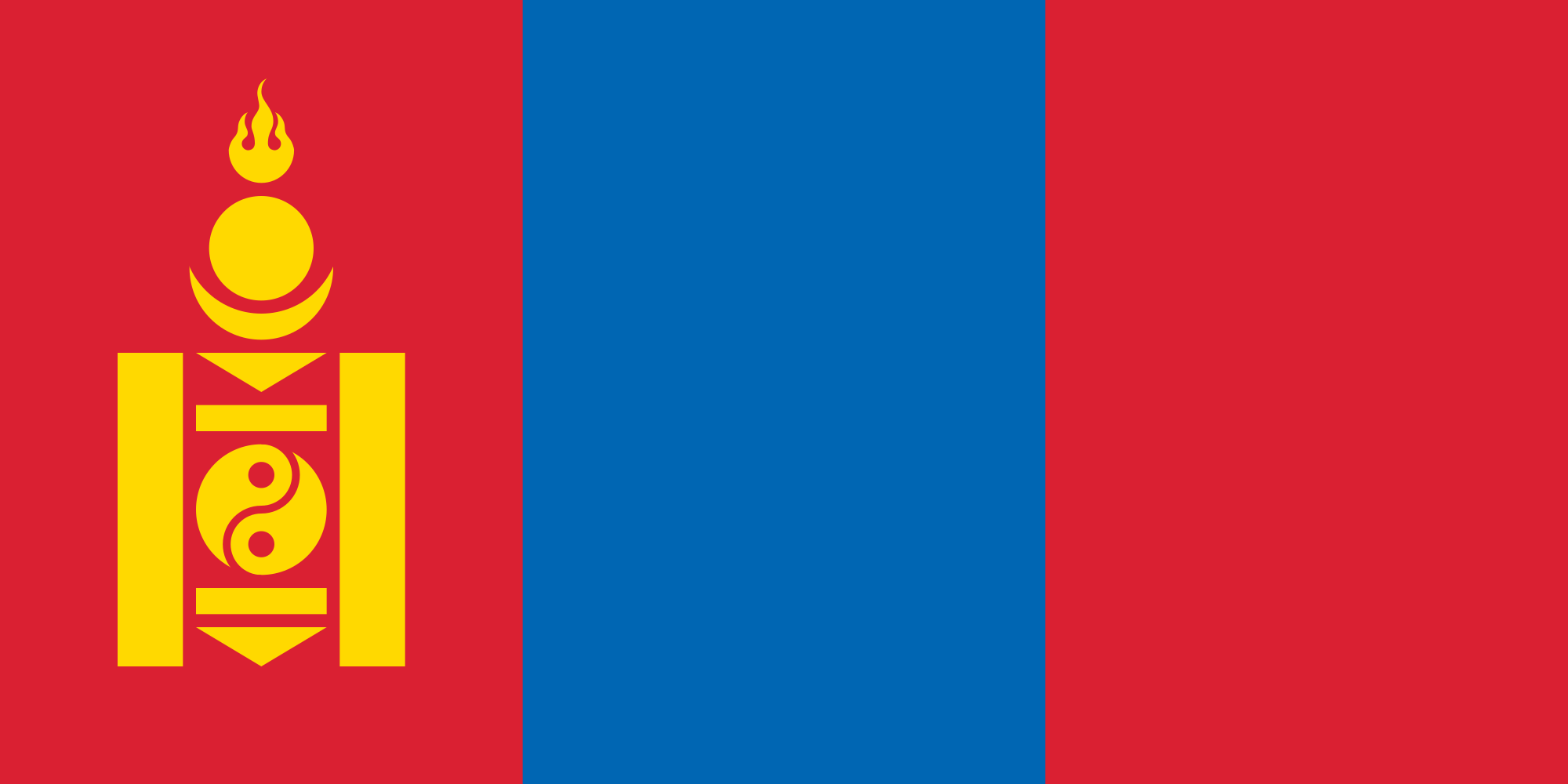 Mongolei
Mongolei
 Montenegro
Montenegro
 Mosambik
Mosambik
 Myanmar
Myanmar
 Namibia
Namibia
 Nepal
Nepal
 New Zealand
New Zealand
 Nicaragua
Nicaragua
 Netherlands
Netherlands
 Niger
Niger
 Nigeria
Nigeria
 Nordmazedonien
Nordmazedonien
 Norwegen
Norwegen
 Oman
Oman
 Austria
Austria
 Pakistan
Pakistan
 Panama
Panama
 Papua-Neuguinea
Papua-Neuguinea
 Paraguay
Paraguay
 Peru
Peru
 Philippines
Philippines
 Poland
Poland
 Portugal
Portugal
 Republik El Salvador
Republik El Salvador
 Republik Haiti
Republik Haiti
 Republik Kongo
Republik Kongo
 Republic of Korea
Republic of Korea
 Ruanda
Ruanda
 Romania
Romania
 Russia
Russia
 Salomonen
Salomonen
 Sambia
Sambia
 Samoa
Samoa
 Saudi Arabia
Saudi Arabia
 Sweden
Sweden
 Sweden
Sweden
 Switzerland
Switzerland
 Genf
Genf
 Senegal
Senegal
 Seychellen
Seychellen
 Sierra Leone
Sierra Leone
 Simbabwe
Simbabwe
 Singapore
Singapore
 Slovakia
Slovakia
 Slovenia
Slovenia
 Spain
Spain
 Sri Lanka
Sri Lanka
 Saint Kitts and Nevis
Saint Kitts and Nevis
 St. Lucia
St. Lucia
 St. Vincent and the Grenadines
St. Vincent and the Grenadines
 South Africa
South Africa
 Suriname
Suriname
 Swasiland
Swasiland
 Tajikistan
Tajikistan
 Taiwan Sheng-TW
Taiwan Sheng-TW
 Tansania
Tansania
 Thailand
Thailand
 Togo
Togo
 Tonga
Tonga
 Trinidad und Tobago
Trinidad und Tobago
 Tschad
Tschad
 Czech Republic
Czech Republic
 Tunisia
Tunisia
 Turkey
Turkey
 Uganda
Uganda
 Ukraine
Ukraine
 Hungary
Hungary
 Uruguay
Uruguay
 Vanuatu
Vanuatu
 Venezuela
Venezuela
 United Arab Emirates
United Arab Emirates
 United States
United States
 United Kingdom
United Kingdom
 Vietnam
Vietnam

 Important International Organizations
Important International Organizations
 World Trade Organization
World Trade Organization
 Roberto Azevêdo
Roberto Azevêdo
 World Trade Organization
World Trade Organization
 Mike Moore
Mike Moore
 World Trade Organization
World Trade Organization
 Ngozi Okonjo-Iweala
Ngozi Okonjo-Iweala
 World Trade Organization
World Trade Organization
 Pascal Lamy
Pascal Lamy
 World Trade Organization
World Trade Organization
 Peter Sutherland
Peter Sutherland
 World Trade Organization
World Trade Organization
 Renato Ruggiero
Renato Ruggiero
 World Trade Organization
World Trade Organization
 Supachai Panitchpakdi
Supachai Panitchpakdi
 Central African Republic
Central African Republic
 Cyprus
Cyprus


世界贸易组织(简称世贸组织或世贸;英语:World Trade Organization,缩写为 WTO;法语:Organisation Mondiale du Commerce,缩写为 OMC;西班牙语:Organización Mundial del Comercio,缩写为 OMC)是负责监督成员经济体之间各种贸易协议得到执行的一个国际组织,前身是1948年起实施的关税及贸易总协定的秘书处。
世贸总部位于瑞士日内瓦,现任总干事是罗伯托·阿泽维多。截至2016年7月29日,世界贸易组织共有164个成员。[5]世界贸易组织的职能是调解纷争,加入WTO不算签订一种多边贸易协议,但其设置的入会门槛可以做为愿意降低关税、法政上配合、参与国际贸易的门票,它是贸易体制的组织基础和法律基础,是众多贸易协定的管理者,是各成员贸易立法的监督者,是就贸易提供解决争端和进行谈判的场所。该机构是当代最重要的国际经济组织之一,其成员间的贸易额占世界贸易额的绝大多数,被称为“经济联合国”。
Die Welthandelsorganisation (englisch World Trade Organization, WTO; französisch Organisation mondiale du commerce, OMC; spanisch Organización Mundial de Comercio, OMC) ist eine internationale Organisation mit Sitz in Genf, die sich mit der Regelung von Handels- und Wirtschaftsbeziehungen beschäftigt. Sie wurde am 15. April 1994 aus dem General Agreement on Tariffs and Trade (GATT) in der Uruguay-Runde nach siebenjähriger Verhandlungszeit gegründet. Am 1. Januar 1995 nahm sie ihre Arbeit in Genf auf. Die WTO ist neben dem IWF und der Weltbank eine der zentralen internationalen Organisationen, die Handels- und Wirtschaftspolitik mit globaler Reichweite verhandelt.
世界貿易機関(せかいぼうえききかん、英: World Trade Organization、略称:WTO)は、自由貿易促進を主たる目的として創設された国際機関である。常設事務局がスイスのジュネーブに置かれている。
GATT(ガット)ウルグアイ・ラウンドにおける合意によって、世界貿易機関を設立するマラケシュ協定(WTO設立協定)に基づいて1995年1月1日にGATTを発展解消させて成立した。
本来GATTは、第二次世界大戦後の安定を見据え、国際通貨基金および国際復興開発銀行とともに設立が予定されていた国際貿易機関(ITO)の設立準備の際に、暫定協定として結ばれたものであった。国際貿易機関の設立が廃案となり、GATTがその代替として発展強化されていくうちに、再びこの分野の常設機関が求められ、WTOが設立されることとなった。発展解消であるため、GATTの事務局及び事務局長もWTOへと引き継がれることとなった[4]。
WTOはGATTを継承したものであるが、GATTが協定(Agreement)に留まったのに対し、WTOは機関(Organization)であるのが根本的な違いである。
を基本原則としている。また、物品貿易だけでなく金融、情報通信、知的財産権やサービス貿易も含めた包括的な国際通商ルールを協議する場である。
対抗処置の発動では、紛争処理機関(パネル)の提訴に対し全加盟国による反対がなければ採択されるというネガティブ・コンセンサス方式(逆コンセンサス方式)を採用した強力な紛争処理能力を持つ。これは国際組織としては稀な例であり、コンセンサス方式を採っていたGATTとの大きな違いで、WTOの特徴の一つといえる。
新多角的貿易交渉(新ラウンド)は、2001年11月にカタールのドーハで行われた第4回WTO閣僚会議で開始を決定し、ドーハ・ラウンドと呼ばれていた。2002年2月1日の貿易交渉委員会で新ラウンドがスタートした。しかし9年に及ぶ交渉は先進国と、急速に台頭してきたBRICsなど新興国との対立によって中断と再開を繰り返した末、ジュネーブで行われた第4回WTO閣僚会議(2011年12月17日)で「交渉を継続していくことを確認するものの、近い将来の妥結を断念する」(議長総括)となり事実上停止状態になった。
その後、2013年のバリ島における閣僚会議で、貿易円滑化協定を含む合意が成立し、2014年7月まで貿易円滑化協定をWTO協定に加える(附属書1Aに追加)するための文書を一般理事会で採択すべきとされた[5]。しかしインドが合意を蒸し返す状態で反対したため期限までに採択できなかった[6]。その後食糧備蓄への補助金の問題で先進国側が譲歩することでようやくインドが合意し、2014年11月27日の一般理事会で貿易円滑化協定が採択された[6]。WTO加盟国の3分の2が改正を受諾した日に発効することになっており、2017年2月22日にこの要件を満たし、協定が発効した。
The World Trade Organization (WTO) is an intergovernmental organization that regulates international trade. The WTO officially commenced on 1 January 1995 under the Marrakesh Agreement, signed by 124 nations on 15 April 1994, replacing the General Agreement on Tariffs and Trade (GATT), which commenced in 1948. It is the largest international economic organization in the world.[5][6]
The WTO deals with regulation of trade in goods, services and intellectual property between participating countries by providing a framework for negotiating trade agreements and a dispute resolution process aimed at enforcing participants' adherence to WTO agreements, which are signed by representatives of member governments[7]:fol.9–10 and ratified by their parliaments.[8] The WTO prohibits discrimination between trading partners, but provides exceptions for environmental protection, national security, and other important goals.[9] Trade-related disputes are resolved by independent judges at the WTO through a dispute resolution process.[9]
The WTO's current Director-General is Roberto Azevêdo,[10][11] who leads a staff of over 600 people in Geneva, Switzerland.[12] A trade facilitation agreement, part of the Bali Package of decisions, was agreed by all members on 7 December 2013, the first comprehensive agreement in the organization's history.[13][14] On 23 January 2017, the amendment to the WTO Trade Related Aspects of Intellectual Property Rights (TRIPS) Agreement marks the first time since the organization opened in 1995 that WTO accords have been amended, and this change should secure for developing countries a legal pathway to access affordable remedies under WTO rules.[15]
Studies show that the WTO boosted trade,[16][17][9] and that barriers to trade would be higher in the absence of the WTO.[18] The WTO has highly influenced the text of trade agreements, as "nearly all recent [preferential trade agreements (PTAs)] reference the WTO explicitly, often dozens of times across multiple chapters... in many of these same PTAs we find that substantial portions of treaty language—sometime the majority of a chapter—is copied verbatim from a WTO agreement."[19]
L'Organisation mondiale du commerce (OMC ; en anglais : World Trade Organization, WTO, en espagnol : Organización Mundial del Comercio, OMC) est une organisation internationale qui s'occupe des règles régissant le commerce international entre les pays. Au cœur de l'organisation se trouvent les accords de l'OMC, négociés et signés en avril 1994 à Marrakech1 par la majeure partie des puissances commerciales du monde2 et ratifiés par leurs assemblées parlementaires. L'OMC a pour but principal de favoriser l'ouverture commerciale. Pour cela, elle tâche de réduire les obstacles au libre-échange, d'aider les gouvernements à régler leurs différends commerciaux et d'assister les exportateurs, les importateurs et les producteurs de marchandises et de services dans leurs activités.
Depuis 2001, le cycle de négociation mené par l'OMC est le Cycle de Doha3. Bien que l'OMC ne soit pas une agence spécialisée de l'ONU, elle entretient des liens avec cette dernière4. Le siège de l'OMC est au Centre William-Rappard, à Genève. Depuis le 1er septembre 2013, l'organisation est présidée par le Brésilien Roberto Azevêdo qui a été élu directeur général.
L'Organizzazione mondiale del commercio, abbreviato in OMC (in inglese: World Trade Organization, WTO), è un'organizzazione internazionale creata allo scopo di supervisionare numerosi accordi commerciali tra gli stati membri. Vi aderiscono[3] 164 Paesi, a cui se ne aggiungono altri 22 con ruolo di osservatori,[4] comprendendo così oltre il 95% del commercio mondiale di beni e servizi.[5]
La sede dell'OMC si trova, dal 1995, presso il Centro William Rappard a Ginevra, Svizzera.[6]
La Organización Mundial del Comercio (OMC) fue establecida en 1995. Tiene su sede en Ginebra, Suiza, y sus idiomas oficiales son el inglés, el francés y el español. La OMC no forma parte del sistema de las Naciones Unidas, y tampoco de los organismos de Bretton Woods como el Banco Mundial o el FMI.Nota 1
Всеми́рная торго́вая организа́ция (ВТО; англ. World Trade Organization (WTO), фр. Organisation mondiale du commerce (OMC), исп. Organización Mundial del Comercio) — международная организация, созданная 1 января 1995 года с целью либерализации международной торговли и регулирования торгово-политических отношений государств-членов. ВТО образована на основе Генерального соглашения по тарифам и торговле (ГАТТ), заключенного в 1947 году и на протяжении почти 50 лет фактически выполнявшего функции международной организации, но не являвшегося тем не менее международной организацией в юридическом смысле.
ВТО отвечает за разработку и внедрение новых торговых соглашений, а также следит за соблюдением членами организации всех соглашений, подписанных большинством стран мира и ратифицированных их парламентами. ВТО строит свою деятельность, исходя из решений, принятых в 1986—1994 годах в рамках Уругвайского раунда и более ранних договоренностей ГАТТ. Обсуждения проблем и принятие решений по глобальным проблемам либерализации и перспективам дальнейшего развития мировой торговли проходят в рамках многосторонних торговых переговоров (раунды). К настоящему времени проведено 8 раундов таких переговоров, включая Уругвайский, а в 2001 году стартовал девятый в Дохе, Катар. Организация пытается завершить переговоры по Дохийскому раунду переговоров, который был начат с явным акцентом на удовлетворение потребностей развивающихся стран. По состоянию на декабрь 2012 года будущее раунда переговоров в Дохе остаётся неопределённым: программа работы состоит из 21 части, а первоначально установленный окончательный срок 1 января 2005 года был давно пропущен[3]. В ходе переговоров возник конфликт между стремлением к свободной торговле и стремлением множества стран к протекционизму, особенно в плане сельскохозяйственных субсидий. До сих пор эти препятствия остаются главными и мешают любому прогрессу для запуска новых переговоров в рамках Дохийского раунда. По состоянию на июль 2012 года, существуют различные группы переговоров в системе ВТО для решения текущих вопросов в плане сельского хозяйства, что приводит к застою в самих переговорах[4].
Штаб-квартира ВТО расположена в Женеве, Швейцария. Глава ВТО (генеральный директор) — Роберту Карвалью ди Азеведу, в штате самой организации около 600 человек[5].
На 26 апреля 2015 года в ВТО состояли 162 страны[6].
Правила ВТО предусматривают ряд льгот для развивающихся стран. В настоящее время развивающиеся страны — члены ВТО имеют (в среднем) более высокий относительный уровень таможенно-тарифной защиты своих рынков по сравнению с развитыми. Тем не менее, в абсолютном выражении общий размер таможенно-тарифных санкций в развитых странах гораздо выше, вследствие чего доступ на рынки высокопередельной продукции из развивающихся стран серьёзно ограничен[7].
Правила ВТО регулируют только торгово-экономические вопросы. Попытки США и ряда европейских стран начать дискуссию об условиях труда (что позволило бы считать недостаточную законодательную защиту работников конкурентным преимуществом) были отвергнуты из-за протестов развивающихся стран, которые утверждали, что такие меры только ухудшат благосостояние работников в связи с сокращением числа рабочих мест, снижением доходов и уровня конкурентоспособности[7].
Mitglieder der WTO
| Staat | Beitrittsdatum |
|---|---|
| 30. Juni 1995 | |
| 29. Juli 2016 | |
| 8. September 2000 | |
| 23. November 1996 | |
| 1. Januar 1995 | |
| 1. Januar 1995 | |
| 5. Februar 2003 | |
| 1. Januar 1995 | |
| 1. Januar 1995 | |
| 1. Januar 1995 | |
| 1. Januar 1995 | |
| 1. Januar 1995 | |
| 1. Januar 1995 | |
| 22. Februar 1996 | |
| 12. September 1995 | |
| 31. Mai 1995 | |
| 1. Januar 1995 | |
| 1. Januar 1995 | |
| 1. Dezember 1996 | |
| 3. Juni 1995 | |
| 23. Juli 1995 | |
| 1. Januar 1995 | |
| 11. Dezember 2001 | |
| 1. Januar 1995 | |
| 1. Januar 1995 | |
| 1. Januar 1995 | |
| 1. Januar 1995 | |
| 9. März 1995 | |
| 31. Mai 1995 | |
| 21. Januar 1996 | |
| 7. Mai 1995 | |
| 1. Januar 1995 | |
| 13. November 1999 | |
| 1. Januar 1995 | |
| 1. Januar 1995 | |
| 14. Januar 1996 | |
| 1. Januar 1995 | |
| 1. Januar 1995 | |
| 1. Januar 1995 | |
| 23. Oktober 1996 | |
| 14. Juni 2000 | |
| 1. Januar 1995 | |
| 22. Februar 1996 | |
| 1. Januar 1995 | |
| 21. Juli 1995 | |
| 25. Oktober 1995 | |
| 31. Mai 1995 | |
| 1. Januar 1995 | |
| 30. Januar 1996 | |
| 1. Januar 1995 | |
| 1. Januar 1995 | |
| 1. Januar 1995 | |
| 1. Januar 1995 | |
| 1. Januar 1995 | |
| 1. Januar 1995 | |
| 21. April 1995 | |
| 1. Januar 1995 | |
| 9. März 1995 | |
| 26. Juni 2014 | |
| 1. Januar 1995 | |
| 11. April 2000 | |
| 13. Oktober 2004 | |
| 13. Dezember 1995 | |
| 1. Januar 1995 | |
| 23. Juli 2008 | |
| 30. November 2015 | |
| 13. Januar 1996 | |
| 1. Januar 1995 | |
| 20. Dezember 1998 | |
| 30. April 1995 | |
| 1. Januar 1997 | |
| 27. März 1997 | |
| 30. November 2000 | |
| 20. April 1995 | |
| 1. Januar 1995 | |
| 2. Februar 2013 | |
| 31. Mai 1995 | |
| 10. Februar 1999 | |
| 14. Juli 2016 | |
| 1. September 1995 | |
| 31. Mai 2001 | |
| 1. Januar 1995 | |
| 1. Januar 1995 | |
| 17. November 1995 | |
| 29. April 2012 | |
| 31. Mai 1995 | |
| 1. Januar 1995 | |
| 31. Mai 1995 | |
| 31. Mai 1995 | |
| 1. Januar 1995 | |
| 1. Januar 1995 | |
| 31. Mai 1995 | |
| 1. Januar 1995 | |
| 4. April 2003 | |
| 1. Januar 1995 | |
| 26. Juli 2001 | |
| 29. Januar 1997 | |
| 26. August 1995 | |
| 1. Januar 1995 | |
| 1. Januar 1995 | |
| 23. April 2004 | |
| 1. Januar 1995 | |
| 3. September 1995 | |
| 1. Januar 1995 | |
| 13. Dezember 1996 | |
| 1. Januar 1995 | |
| 1. Januar 1995 | |
| 9. November 2000 | |
| 1. Januar 1995 | |
| 1. Januar 1995 | |
| 6. September 1997 | |
| 9. Juni 1996 | |
| 1. Januar 1995 | |
| 1. Januar 1995 | |
| 1. Januar 1995 | |
| 1. Juli 1995 | |
| 1. Januar 1995 | |
| 22. Mai 1996 | |
| 1. Januar 1995 | |
| 22. August 2012 | |
| 26. Juli 1996 | |
| 1. Januar 1995 | |
| 11. Dezember 2005 | |
| 10. Mai 2012 | |
| 1. Januar 1995 | |
| 1. Januar 1995 | |
| 1. Januar 1995 | |
| 26. April 2015 | |
| 23. Juli 1995 | |
| 5. März 1995 | |
| 1. Januar 1995 | |
| 1. Januar 1995 | |
| 30. Juli 1995 | |
| 1. Januar 1995 | |
| 1. Januar 1995 | |
| 21. Februar 1996 | |
| 1. Januar 1995 | |
| 1. Januar 1995 | |
| 1. Januar 1995 | |
| 1. Januar 1995 | |
| 1. Januar 1995 | |
| 2. März 2013 | |
| 1. Januar 2002 | |
| 1. Januar 1995 | |
| 1. Januar 1995 | |
| 31. Mai 1995 | |
| 27. Juli 2007 | |
| 1. März 1995 | |
| 19. Oktober 1996 | |
| 1. Januar 1995 | |
| 29. März 1995 | |
| 26. März 1995[2] | |
| 1. Januar 1995 | |
| 16. Mai 2008 | |
| 1. Januar 1995 | |
| 1. Januar 1995 | |
| 1. Januar 1995 | |
| 10. April 1996 | |
| 1. Januar 1995 | |
| 1. Januar 1995 | |
| 24. August 2012 | |
| 11. Januar 2007 | |
| 31. Mai 1995 | |
| 30. Juli 1995 |
 Brazil
Brazil
 China
China
 India
India
 Cambodia
Cambodia

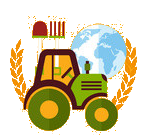 Agriculture, forestry, livestock, fishing
Agriculture, forestry, livestock, fishing
 Myanmar
Myanmar
 Pakistan
Pakistan
 Thailand
Thailand
 Uruguay
Uruguay
 United States
United States
 Vietnam
Vietnam


中国文昌航天发射场[2](China Wenchang Spacecraft Launch Site),又称文昌航天城,位于中国海南省文昌市龙楼镇以南、中南水库以东,隶属中国西昌卫星发射中心,是西昌卫星发射中心下辖的两个发射场之一。[3][4][5]
该航天发射场于2009年9月14日开工建设,2014年10月中旬建成。由于此地点的纬度较低(约北纬19度),离赤道较近,地球自转造成的离心力可以让火箭在燃料不变的情况下携带更大的载荷。该中心可以用来发射大型长征五号系列火箭及中型长征七号系列火箭。
文昌衛星発射場(ぶんしょうえいせいはっしゃじょう、簡体字: 文昌卫星发射场、英語: Wenchang Satellite Launch Site)は、中華人民共和国海南省の文昌市郊外のロケット発射場、西昌衛星発射センターに所属。南シナ海に面した海南島の北東の海岸に位置する中国第4の発射場で、4つの発射場のうち最も南にあり、中国初となる海岸沿いの発射場。もとは弾道ロケットの試験場だった場所であるが、本格稼働に向け拡張工事が行われている。
Wenchang Spacecraft Launch Site (文昌航天发射场[2][3]), located in Wenchang, Hainan, China. It is one of the two spacecraft launch sites of Xichang Satellite Launch Center (the other site is in Xichang).[4][5][6]
It is a former sub-orbital test center. It is China's fourth and southernmost space vehicle launch facility (spaceport). It has been specially selected for its low latitude, which is only 19 degrees north of the equator, which will allow for a substantial increase in payload, necessary for the future manned program, space station and deep space exploration program. Furthermore, it is capable of launching the new heavy-lift Long March 5 booster.[7]
Unlike the space centers on the mainland whose rail tracks are too narrow to transport the new five meter core boosters, Wenchang uses its sea port for deliveries. Initial launches of the CZ-5 booster from Wenchang were, as of early 2008, expected in 2014, one year after the intended commissioning of the Wenchang Launch Site.[8] They were later shifted to 2016.[9] The CZ-5B (max payload to LEO) variant will fly around 2018.[10] But CZ-5 carrier rocket was already shipped from North China's Tianjin port at 20 September 2015 for a rehearsal (some drills carried out on the launch pad that involves both the carrier rocket and a probe) of a scheduled Chang'e-5 lunar mission planned around 2019.[11]
The construction of the site was completed by October, 2014.[1] The first launch took place successfully at 20:00, June 25, 2016.[12]
La base de lancement de Wenchang est la quatrième base de lancement d'engins spatiaux de la République populaire de Chine. Elle est entrée en fonction le 25 juin 2016 avec le lancement du premier exemplaire du lanceur lourd Longue Marche 7. Elle est située à proximité de la ville de Wenchang sur la côte nord-est de l’île de Hainan. Utilisé jusque-là pour le tir de fusées-sondes, le site a été sélectionné en premier lieu pour sa faible latitude : situé sur le 19e parallèle nord, sa proximité avec l’équateur permet d’augmenter de manière importante la masse des charges utiles placées sur une orbite géostationnaire. La base est conçue pour permettre le tir des nouveaux lanceurs chinois en particulier le lanceur de moyenne puissance Longue Marche 7 qui doit assurer la majorité des lancements de satellites chinois à terme et le lanceur lourd Longue Marche 5 (charge utile de 25 tonnes en orbite basse) qui doit d'une part jouer un rôle central dans la réalisation du programme spatial habité en permettant la construction d’une station spatiale lourde d'autre part permettre l'envoi de sondes spatiales dans le système solaire.
Il centro spaziale di Wenchang (WSLC, Wenchang Satellite Launch Center) è uno spazioporto situato a Wenchang, sull'isola di Hainan, in Cina. In precedenza usato solo per voli suborbitali, il 25 giugno 2016 è stato utilizzato per la prima volta per un lancio orbitale. È il quarto centro di lancio cinese e quello situato più a sud (19° di latitudine), il che permette di aumentare il carico lanciato senza dover aumentare le dimensioni del lanciatore. Sarà utilizzato per future missioni umane, per la stazione spaziale cinese e per missioni nello spazio profondo. Sarà inoltre il sito di lancio per il futuro lanciatore spaziale cinese Lunga Marcia 5.
Il primo lancio è avvenuto alle ore 20.00 (ora locale) del 25 giugno 2016, quando un lanciatore Lunga Marcia 7 ha portato in orbita con successo alcuni satelliti.
El Centro de Lanzamiento de Satélites de Wenchang (WSLC), ubicado cerca de Wenchang, en la costa noreste de la isla de Hainan, es una base espacial china. Es la cuarta instalación de lanzamiento de vehículos espaciales, y situada más al sur, de la República Popular de China. Ha sido seleccionada especialmente por su baja latitud, que está a sólo 19 grados al norte del ecuador, lo que permitirá un aumento sustancial de la carga útil, necesaria para el futuro programa tripulado, la estación espacial y el programa de exploración del espacio profundo. Además, es el centro de lanzamiento de los nuevos vehículos Larga Marcha 5 (CZ-5).2
A diferencia de los centros espaciales en el continente cuyo ancho de vía es demasiado estrecho para transportar los nuevos vehículos de 5 metros, Wenchang hará uso de su puerto marítimo para las entregas. Los lanzamientos iniciales del CZ-5 se esperan para 2014, un año después de la prevista puesta en marcha del Centro de Wenchang.3
Китайский космодром Вэньчан (кит. трад. 中国文昌航天发射场, пиньинь: Zhōngguó wénchāng hángtiān fāshè chǎng, палл.: чжунго вэньчан хантянь фашэ чан, англ. China Wenchang Spacecraft Launch Site, сокр. WSLC) — четвёртый китайский космодром. Прежнее (до ноября 2016 года) название: Центр запуска спутников Вэньчан[1]. Также известный, как Космический городок Вэньчан. Расположен на острове Хайнань (который ранее был известен курортами), на самом юге Китая. Космодром Вэньчан будет иметь ключевое значение для дальнейшей реализации амбициозной космической программы Китая. Его будут использовать для доставки на орбиту компонентов национальной космической станции и осуществления лунных миссий.

曲水流觞,是中国古代汉族民间的一种传统习俗,后来发展成为文人墨客诗酒唱酬的一种雅事 。夏历的三月上巳日人们举行祓禊(fúxì)仪式之后,大家坐在河渠两旁,在上流放置酒杯,酒杯顺流而下,停在谁的面前,谁就取杯饮酒,意为除去灾祸不吉。这种传统历史非常古老,最早可以追溯到西周初年,据南朝梁吴均《续齐谐记》:“昔周公卜城洛邑,因流水以泛酒,故逸《诗》云'羽觞随流波'。”
“曲水流觞” 主要有两大作用,一是欢庆和娱乐,二是祈福免灾。
曲水流觞,是源于中国的一种游戏,后来流传至日本、朝鲜半岛。夏历的三月人们举行祓禊仪式之后,大家坐在河渠两旁,在上流放置酒杯,酒杯顺流而下,停在谁的面前,谁就取杯饮酒。这种游戏非常古老,逸诗有云:“羽觞随波泛”。
“曲水流觞”源于上巳节这一古老风俗。上巳指夏历三月的第一个巳日。周代有水滨祓禊之俗,祓禊指洗濯身体以除去凶疾的一种祭祀仪式,朝廷指定专职的女巫掌管此事。《诗经·郑风·溱洧》记载有郑国阳春三月祓禊的情景。汉代时三月上巳确定为节日。《后汉书·礼仪志》载:“三月上巳,官民皆禊于东流水上,洗濯祓除,去宿垢,为大洁。”魏晋以后上巳改为三月初三,成为一个重要节日,洗濯身体的风俗逐渐演化成临水宴客和郊外踏春,又有了临水浮卵和临水浮枣等习俗,再演变成流觞曲水。
东晋永和九年(353年)三月初三的上巳节,会稽内史王羲之偕亲朋谢安、孙绰等四十二人,相聚会稽山阴(今浙江绍兴)的兰亭,修禊祭祀仪式后,举行曲水流觞的游戏,四十二人人饮酒咏诗,所作诗句结成了《兰亭集》,王羲之为该集作《兰亭集序》。从此曲水流觞,咏诗论文,饮酒赏景,历经千年而盛传不衰。
 Architecture
Architecture
 Law
Law
 Geography
Geography
 Energy resource
Energy resource


 IT-Times
IT-Times
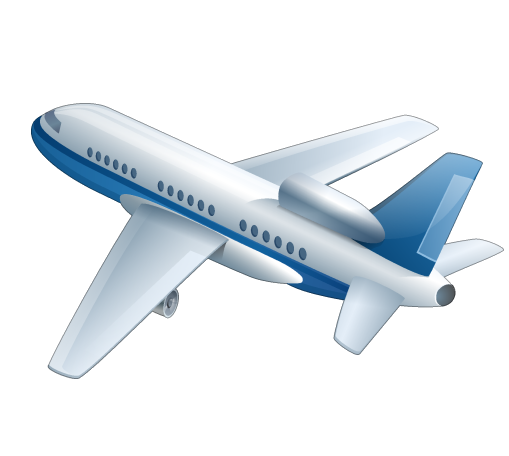

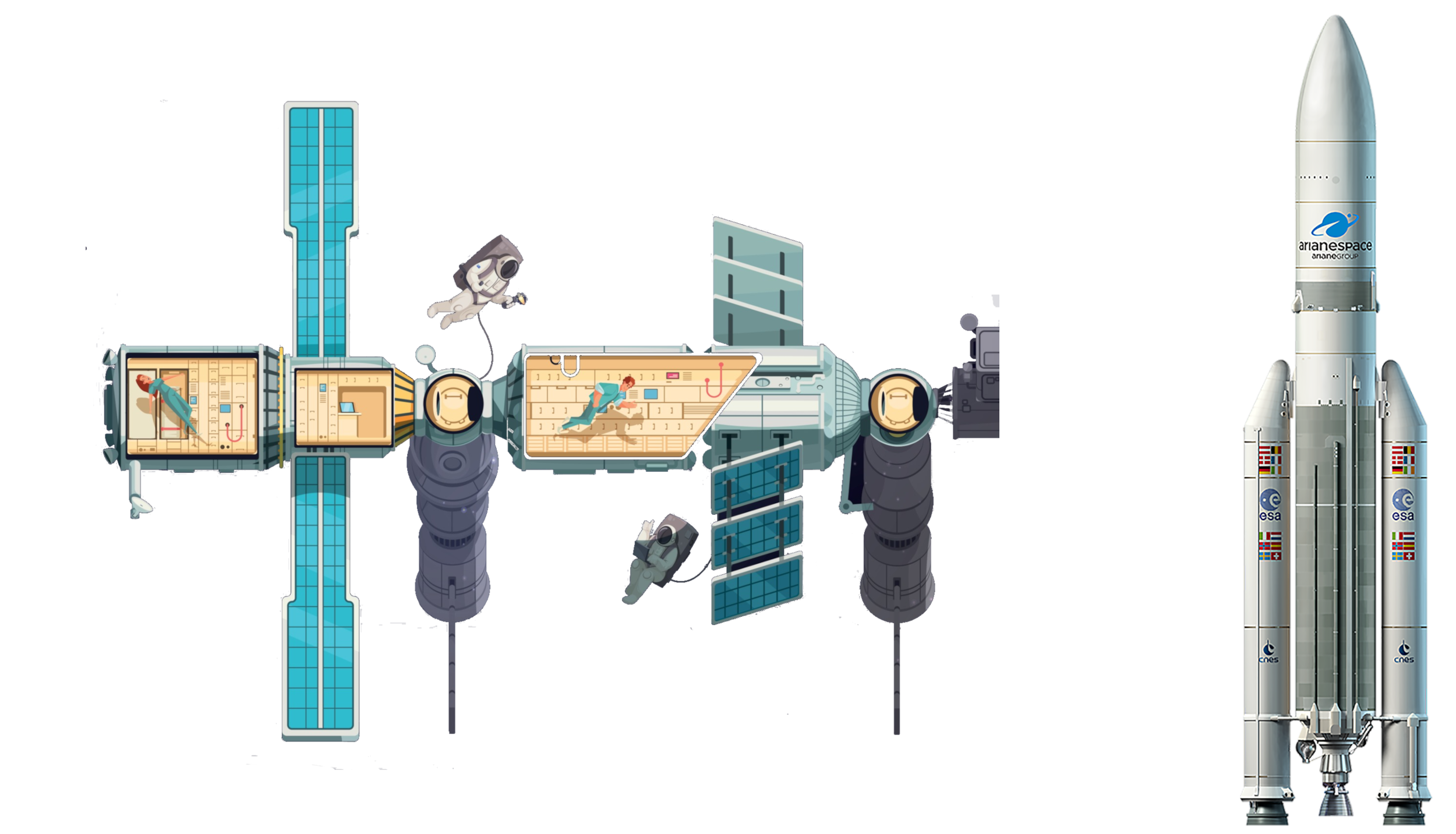 Aerospace
Aerospace
 Astronomy
Astronomy
 Science and technology
Science and technology